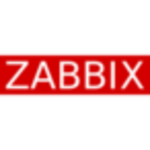What is most valuable?
The most valuable feature is real-time performance monitoring of my production applications; being able to determine within just a couple of minutes, whether or not my applications are having a problem; and being able to correlate that with issues that my customers report on.
How has it helped my organization?
We use it pretty widely across the company. In my particular group, where we've been able to get it situated for all of our .NET and related applications, we've been able to really improve our time to resolution on incidents. We've been able to better institute root-cause analysis for these incidents that we've been having. Whereas before, we were essentially a black box. Customers could say that they were having issues and we would not be able to independently correlate those reports with actual production problems. Now, we have much greater visibility from top to bottom, in terms of the web page and the server level.
We have the database monitoring component, as well. We can take a look and see whether we were having blocking on our database at the time, without needing to engage our database administrator. That also improves our time to resolution.
What needs improvement?
One of the things that I would like to see is a little bit more ease of use with regards to the analytics component. I know that's new. At a recent conference, there was a session for hands on with analytics that I signed up for. I planned to look at that a little bit. Otherwise, it's been a little bit of a black box to try and get started with our existing infrastructure.
I know that they're moving towards a lot of the things that I would like to see. For example, slightly deeper integration of the database monitoring that's already in place and being able to, a little bit more easily, correlate that to the calls that my web service is making. My applications, in particular, are very, very, very database heavy. Being able to see that more closely linked would be nice. The latest version of the controller has already started moving in that direction.
Being able to use analytics in the way that it's advertised; there's still a gap for me personally, in terms of where we are now and what the capabilities of analytics are. I would really like to see that made a little bit more transparent.
These are small, quality-of-life issues.
What do I think about the stability of the solution?
The stability of the product, generally speaking, is good. The worst problem that we have with it has to do with firewall rules and making sure that our agents can reach out to our SaaS controller. Once we get that taken care of, we have that data within just a couple of minutes. The stability incidents that we have on the controller level are very rare; it's available most all of the time.
Buyer's Guide
Splunk AppDynamics
September 2025
Learn what your peers think about Splunk AppDynamics. Get advice and tips from experienced pros sharing their opinions. Updated: September 2025.
868,787 professionals have used our research since 2012.
What do I think about the scalability of the solution?
Scalability is pretty good. We're able to on-board new applications and make sure that we get those correlated up very, very quickly. We are actually moving to a full CI/CD stack, which will be integrating our ability to install and upgrade AppDynamics agents seamlessly, without us having to do it manually, like we do right now.
How are customer service and support?
I use technical support all the time. Usually it's user error, stupid user tricks; I'm pretty good at those. There are definitely a couple of times where we've discovered that there's a bug in the agent or the controller.
We also have bi-weekly calls with our technical contacts, as well as our sales contacts. If we're having a problem, that can be escalated up, very quickly as well.
Which solution did I use previously and why did I switch?
We were not previously using a different solution. It was actually one of my manager’s directives. I actually was with a separate team at Expedia called The Global Customer Operations Center. They had it set up for all of the call centers. If you call 1-800-Expedia, you'll get routed to one of our call centers and they use a set of applications that is supported by this team. It was a situation where users would call up and say that they were having problems, and we weren't able to repro it. They got AppDynamics set up and there was actually a session at that conference that they gave about all of the ways that they're using AppDynamics.
My manager moved to this rather old team at Expedia and one of the things she brought with her was AppDynamics. She was already in the process of getting that set up for that team when I followed her to this other team.
How was the initial setup?
I was not involved of the initial setup of the controller, but we do have several applications that we're on-boarding at this time. Essentially, that is part of our go-live for any of our applications now: “We have this new component coming up. Do we have AppDynamics? Is it reporting?” We refuse to go live on any application until we know that we're reporting that data up through AppDynamics. That is a critical component of our ability to go live on any of our applications.
Which other solutions did I evaluate?
There weren’t any other vendors on the shortlist at the time. We were pretty much sold on AppDynamics. My manager, Diana, is a very, very big fan of AppDynamics. I feel like it really fits well into that niche of real-time, usable, easy-to-learn application performance monitoring. When I got started in GCO to begin with, it was already there and I knew I couldn't screw it up by going in and poking around. So, I went in, poked around and learned a lot about the application we were supporting; where the problems were; and what we could do about it very, very quickly, within a couple of weeks of my coming onto the team. Things like that all add up into us being pretty dedicated AppDynamics customers. They've got a really good relationship with Expedia, in general. We're very happy with them overall.
In general, the most important criterial when selecting a vendor like AppDynamics is ease of use, both with regards to setup and expansion; for example, on-boarding new applications. For me, personally, that low barrier to entry, in terms of becoming familiarized with the product, understanding how it works, seeing where the benefits are for us and our use-case; I think it was extremely compelling.
What other advice do I have?
One of our sister organizations has a WSO2 Enterprise Service Bus instance. They were using the good old stare-and-compare method of making sure that their services were up. They would start their Java application and go stare at the log file. That was how they knew it was running. They didn't have any visibility into how much traffic it was taking, whether that was normal, what their normal call profile looked like. As part of our own evaluation of WSO2 and their Enterprise Service Bus, we asked this team to install AppDynamics on their servers. They came back and said, "How do we get our own?"
Basically, my advice – to people who are looking at better visibility for their applications; better knowledge of how their customers are using their product; knowing whether your application is up or down is one thing but knowing how it gets used can be something else entirely – is, "See if you can get yourself a trial of the controller and some help installing your agents the first time, and then you'll wonder where you've been your whole life without it."
As a general rule, though, AppDynamics is something that we really can't operate without; even in the case of when we had a pretty big network outage earlier this year, where we weren't able to see the controller from our desks. That was sort of like operating with a big, black blindfold on. It's amazing how much we have come to rely on that instant, up-to-the-minute visibility that we have for our applications.
We have other tools like Splunk to help us dig through the logs, but even that doesn't provide the same level of detail that AppDynamics does. I don't really know if there is another product that does. For me, it's a pretty easy win to say that AppDynamics is certainly one of the most important components for us in supporting production environments.
We are not currently using any other AppDynamics products. We're researching how to implement that. Unfortunately, a lot of our applications are legacy. We've got some classic ASP that we haven't moved to .NET. There's a little bit of upgrade hurdle cost with regards to getting the EUM integrated with these classic ASP and related applications. As we start moving towards upgrading and replacing these products, that's something that we're looking at; making sure that we integrate the EUM with it. It's not something we've done yet.
Disclosure: My company does not have a business relationship with this vendor other than being a customer.

















